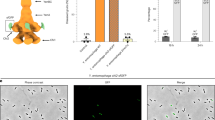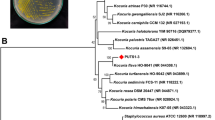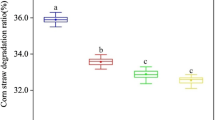Abstract
WHILE culturing cells of Micrococcus lysodeikticus 1, white cells, resistant to lysozyme, were often produced in liquid media containing relatively high carbohydrate. Resistant cells remained Gram-positive and were not lysed by lysozyme in the presence of ethylenediaminetetraacetic acid2. Optimal concentrations of cultural sodium chloride for growth improved the yellow colour of the organisms3. These observations suggested a relationship of the yellow pigment to the polysaccharide substrate of lysozyme.
This is a preview of subscription content, access via your institution
Access options
Subscribe to this journal
Receive 51 print issues and online access
$199.00 per year
only $3.90 per issue
Buy this article
- Purchase on SpringerLink
- Instant access to full article PDF
Prices may be subject to local taxes which are calculated during checkout
Similar content being viewed by others
References
Litwack, G., Proc. Soc. Exp. Biol. and Med., 89, 401 (1955).
Repaske, R., Biochim. Biophys. Acta, 22, 189 (1956).
Litwack, G., and Pramer, D., Proc. Soc. Exp. Biol. and Med., 91, 290 (1956).
Sobin, B., and Stahly, G. L., J. Bacteriol., 44, 265 (1942).
Courington, D. P., and Goodwin, T. W., J. Bacteriol., 70, 568 (1955).
Author information
Authors and Affiliations
Rights and permissions
About this article
Cite this article
LITWACK, G., CARLUCCI, A. The Pigment of Micrococcus lysodeikticus . Nature 181, 904 (1958). https://doi.org/10.1038/181904a0
Issue date:
DOI: https://doi.org/10.1038/181904a0
This article is cited by
-
?Solubilization? of a Cytochrome b Component from Micrococcus lysodeikticus
Nature (1958)
-
Cytochromes of Micrococcus lysodeikticus
Nature (1958)



